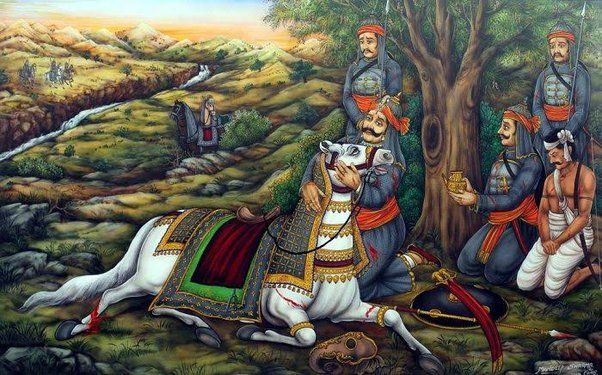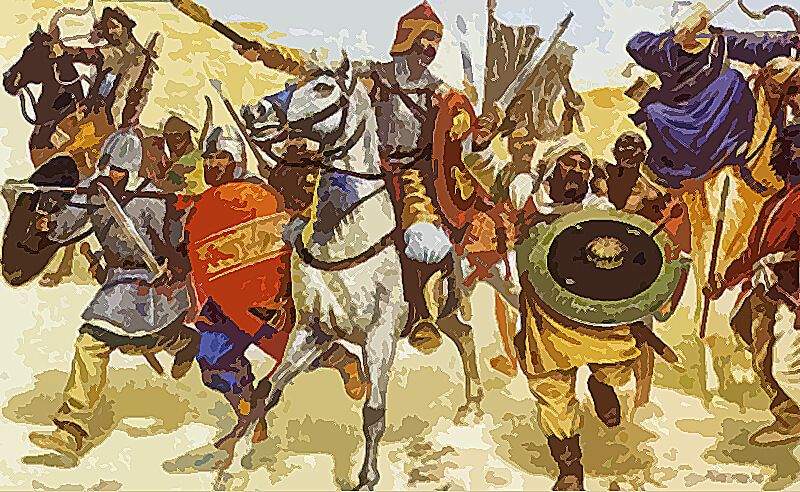In the pages of Indian history, Mewar stands as a beacon of resistance, valor, and undying spirit. At the heart of this legacy is Rana Amar Singh I, the eldest son of the legendary Maharana Pratap, who carried forward the flame of defiance against the Mughal empire. While Maharana Pratap's tales are widely celebrated, the story of his son, Rana Amar Singh, is equally compelling and important in shaping Mewar's future. His life, marked by challenges, battles, and ultimately, pragmatic diplomacy, demonstrates his crucial role in Mewar's history.
Early Life and Legacy

Born in 1559, Rana Amar Singh was the eldest son of Maharana Pratap and his wife, Maharani Ajabde Punwar. From a young age, Amar Singh was groomed in the traditions of warfare, leadership, and Rajput valor. Growing up in the shadow of his illustrious father, Amar Singh witnessed the relentless struggle against the Mughal forces, which defined Mewar's ethos during that era. His early life was deeply influenced by the ideals of independence and self-respect that Maharana Pratap embodied.
After Maharana Pratap’s death in 1597, the mantle of leadership passed on to Amar Singh. He inherited a kingdom that was still recovering from the battles fought by his father. While Mewar remained unconquered, it was under continuous pressure from the Mughal Emperor Akbar, and later his son Jahangir.
Rana Amar Singh’s Struggles and the Battle of Dewar
-Copy-1.jpg)
Perhaps the most notable chapter in Amar Singh's military career is the Battle of Dewar in 1606, where he fought valiantly against the mighty Mughal forces. This battle was symbolic of the Rajput defiance, as Rana Amar Singh continued his father’s legacy of resistance against the Mughals. Even though Amar Singh faced overwhelming odds, his tenacity and the loyalty of his soldiers stood firm. Dewar, which lies in modern-day Rajasthan, became a battlefield that echoed the determination of Mewar.
In this battle, Rana Amar Singh famously charged into the Mughal ranks and broke through their defenses. It was said that in this clash, he personally confronted and attacked Prince Khurram, the future Mughal Emperor Shah Jahan, slicing his turban with a fierce strike. Though the battle did not bring a decisive victory, it exemplified Amar Singh's unwavering resolve.
The Treaty with Jahangir: A Pragmatic Shift

By 1615, after decades of relentless warfare and seeing the depletion of his kingdom's resources, Rana Amar Singh decided to adopt a pragmatic approach. He understood that continuing a direct conflict with the Mughal empire would lead to further devastation for Mewar. This realization led to a historic diplomatic decision — Amar Singh entered into a treaty with Emperor Jahangir.
This treaty, signed at Chittorgarh, marked the end of active hostilities between Mewar and the Mughals. While many saw this as a capitulation, it was, in fact, a shrewd move by Amar Singh. The treaty allowed Mewar to retain its independence, albeit as a vassal state. Importantly, it also ensured that Chittorgarh Fort, the ancestral seat of Mewar, was returned to the Rajputs. Rana Amar Singh did not have to attend the Mughal court in person, preserving the dignity and pride of the Rajput warrior class.
The treaty also stipulated that Mewar would no longer provide military assistance to the Mughals, marking it as one of the rare occasions where a Mughal treaty was signed on terms that still favored the local ruler. This decision not only protected Mewar from further destruction but also allowed it to rebuild its strength under more peaceful conditions.
Rana Amar Singh’s Diplomatic Masterstroke

Many historians view the treaty as Rana Amar Singh’s diplomatic masterstroke. While his father, Maharana Pratap, was known for his unyielding resistance, Amar Singh showed the ability to balance valor with diplomacy. This approach ensured the survival of Mewar during one of the most challenging periods in its history. The treaty with Jahangir was, in a way, Amar Singh's strategic victory, where he preserved Mewar's autonomy without further bloodshed.
Moreover, under his reign, Mewar was able to maintain its distinct Rajput identity and culture, even as many other kingdoms fell under direct Mughal rule. This diplomatic foresight ensured that Mewar continued to thrive in the years that followed.
Legacy and Conclusion

Rana Amar Singh ruled Mewar until 1620, after which he abdicated the throne in favor of his son, Karan Singh II. His rule, while often overshadowed by his father’s legendary status, was pivotal in ensuring Mewar's survival during turbulent times. Amar Singh’s blend of courage on the battlefield and wisdom in diplomacy showcased his deep understanding of the political landscape of his time.
Mewar, under his reign, emerged from the shadows of constant warfare and began to rebuild. The strategic peace he secured allowed future generations to flourish, preserving the heritage of the Sisodia clan. His decision to sign a treaty with the Mughals, while controversial to some, ultimately ensured the continuity and autonomy of Mewar for years to come.
Rana Amar Singh's life and reign are a testament to the idea that victory in battle isn't always measured by swords and shields, but by the preservation of one’s culture, pride, and people. His legacy continues to inspire and remains a crucial chapter in the history of Rajasthan and the broader narrative of India's resistance against foreign domination.
Maharana Pratap, the legendary Rajput king of Mewar, is renowned for his bravery, resistance against the Mughals, and undying love for his homeland. He had a personal life that involved multiple marriages, a common practice among kings of that era for political alliances and the need to strengthen bonds with various royal families. Maharana Pratap had 11 wives, each contributing to his legacy, with several of his children playing significant roles in Rajput history.


